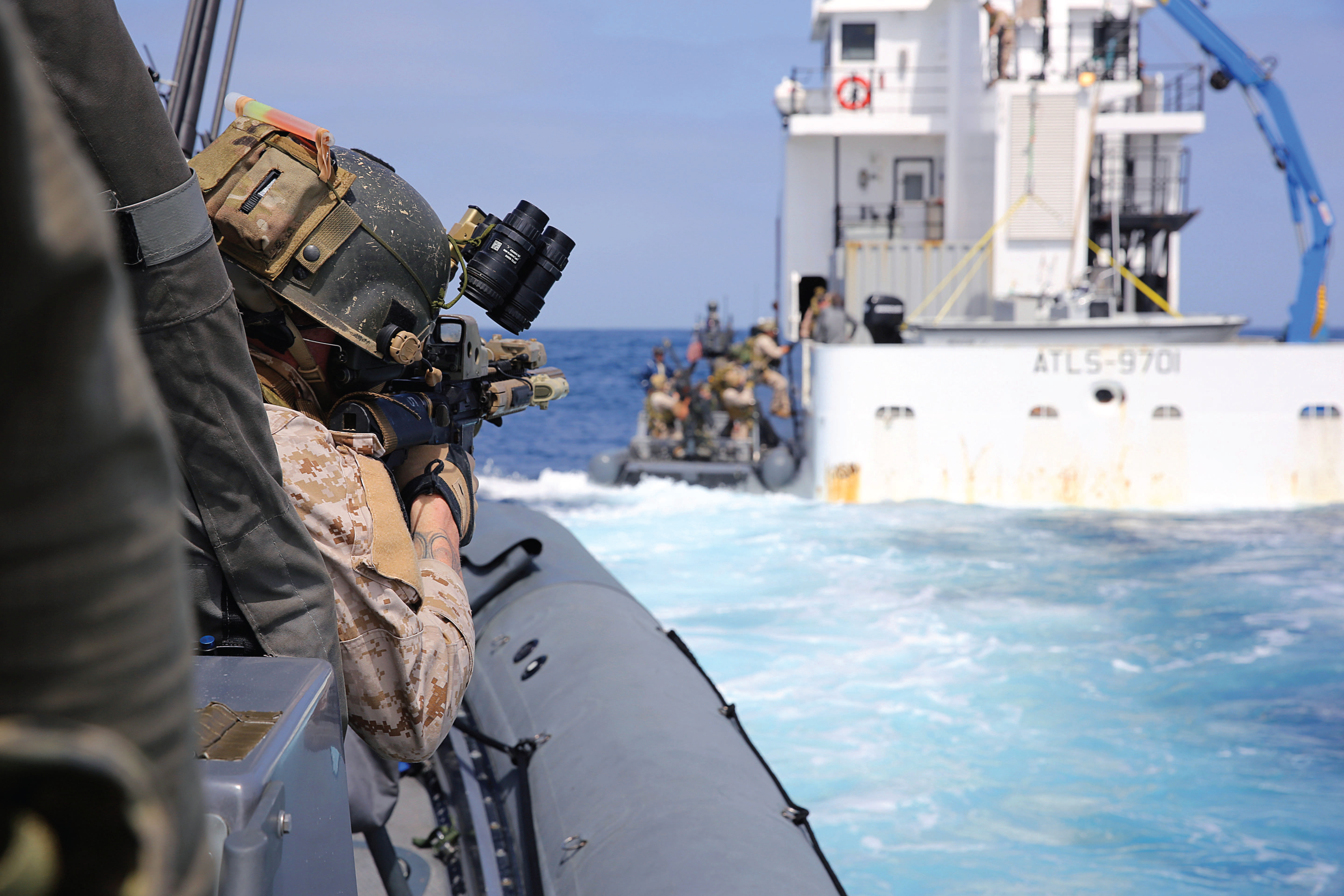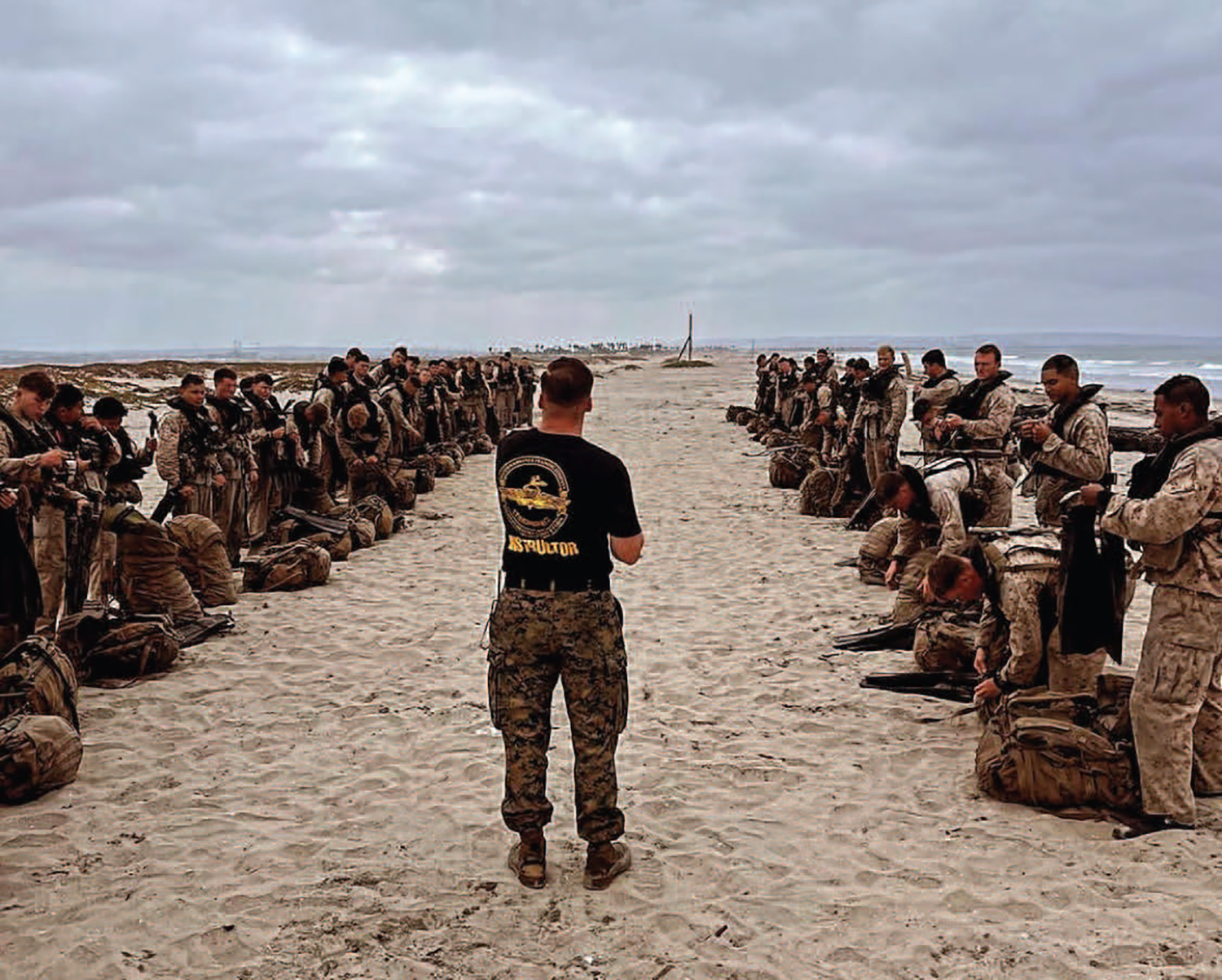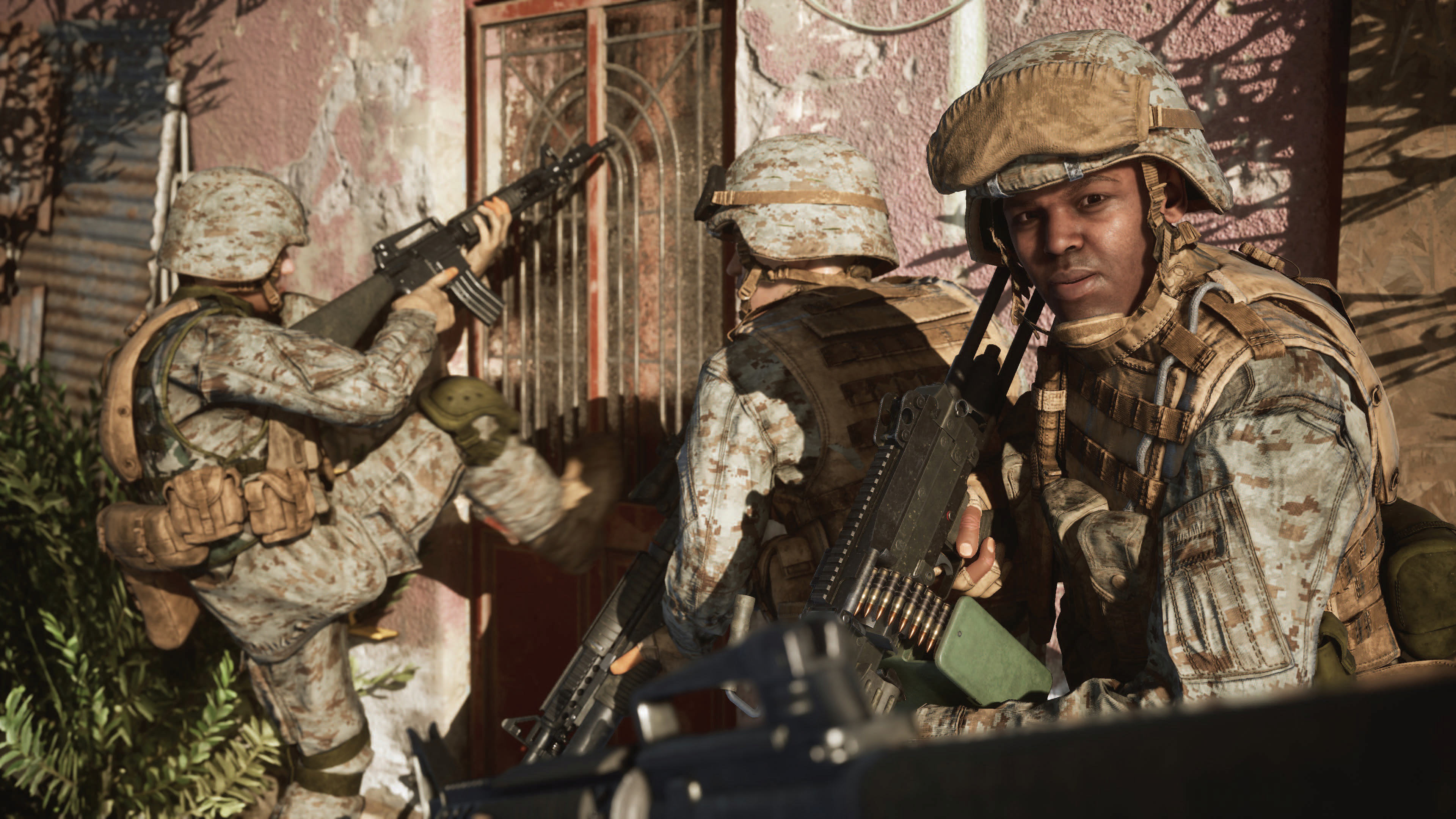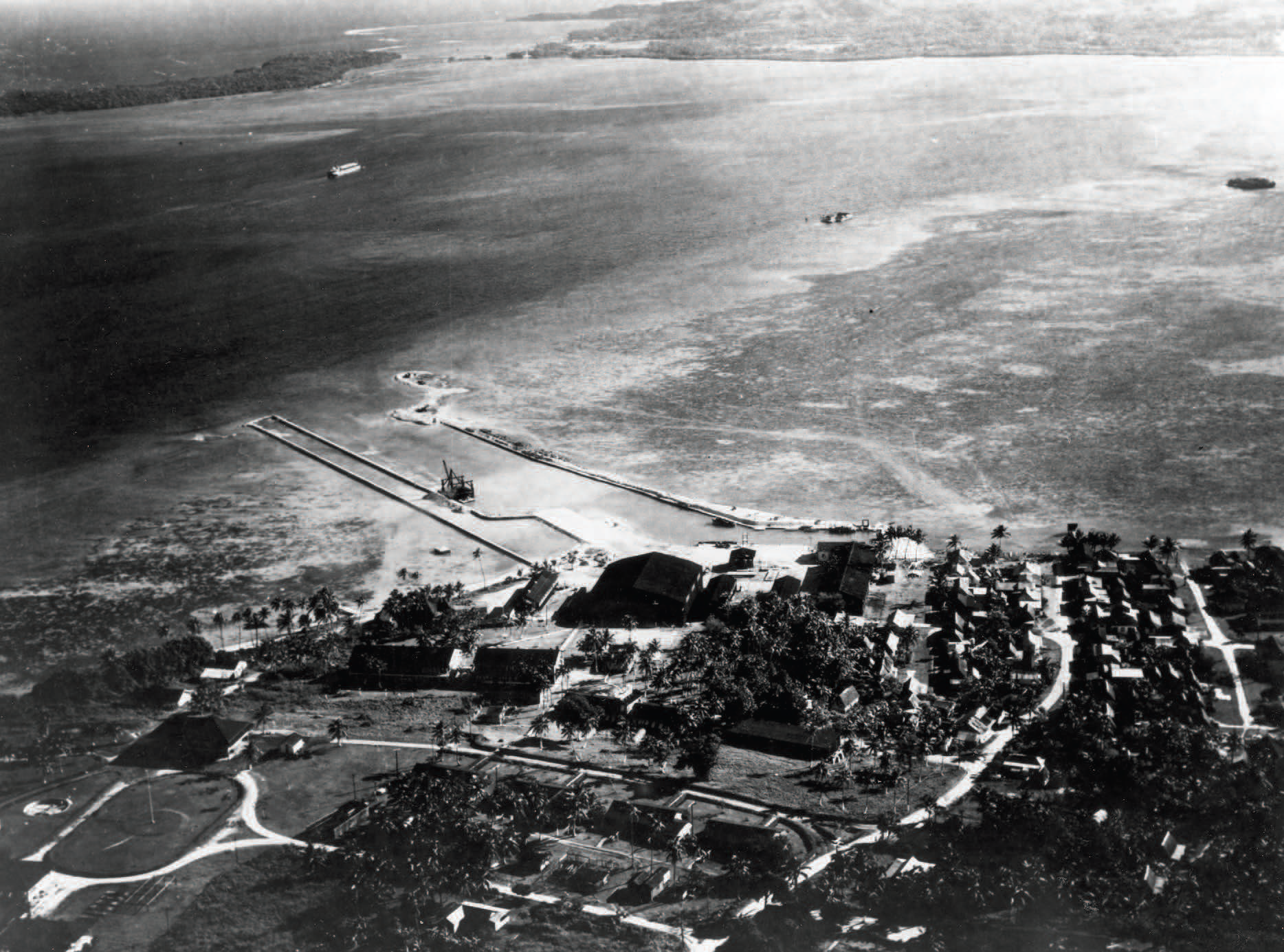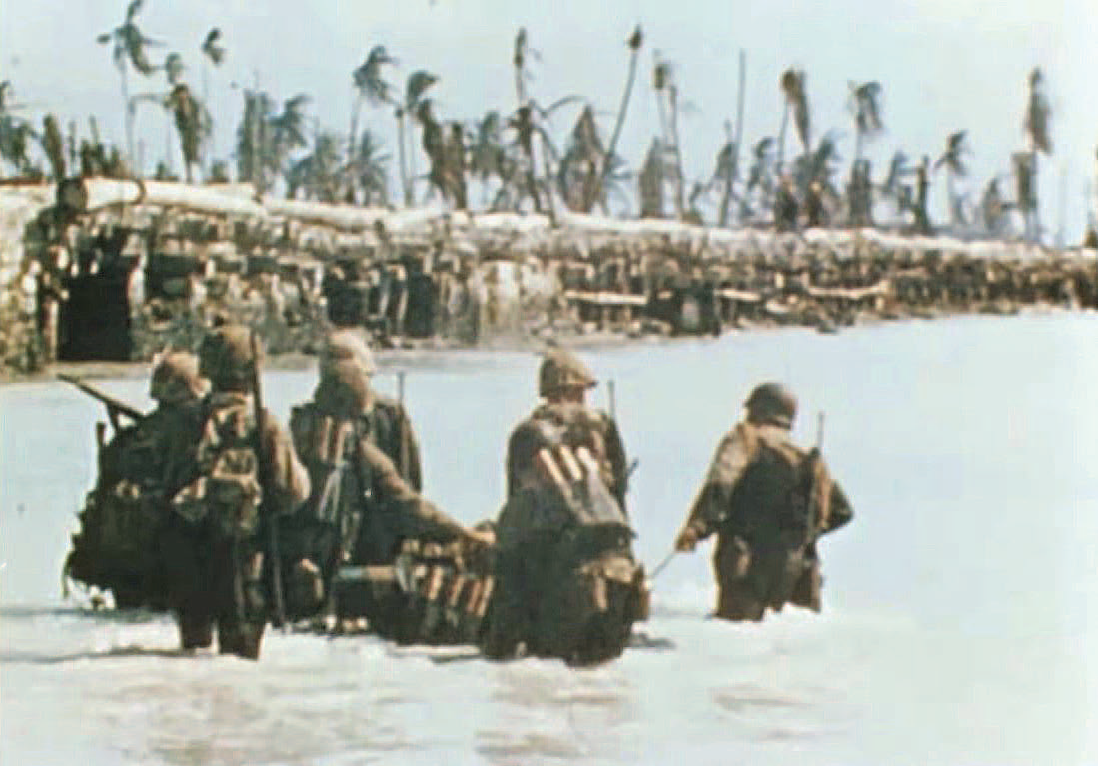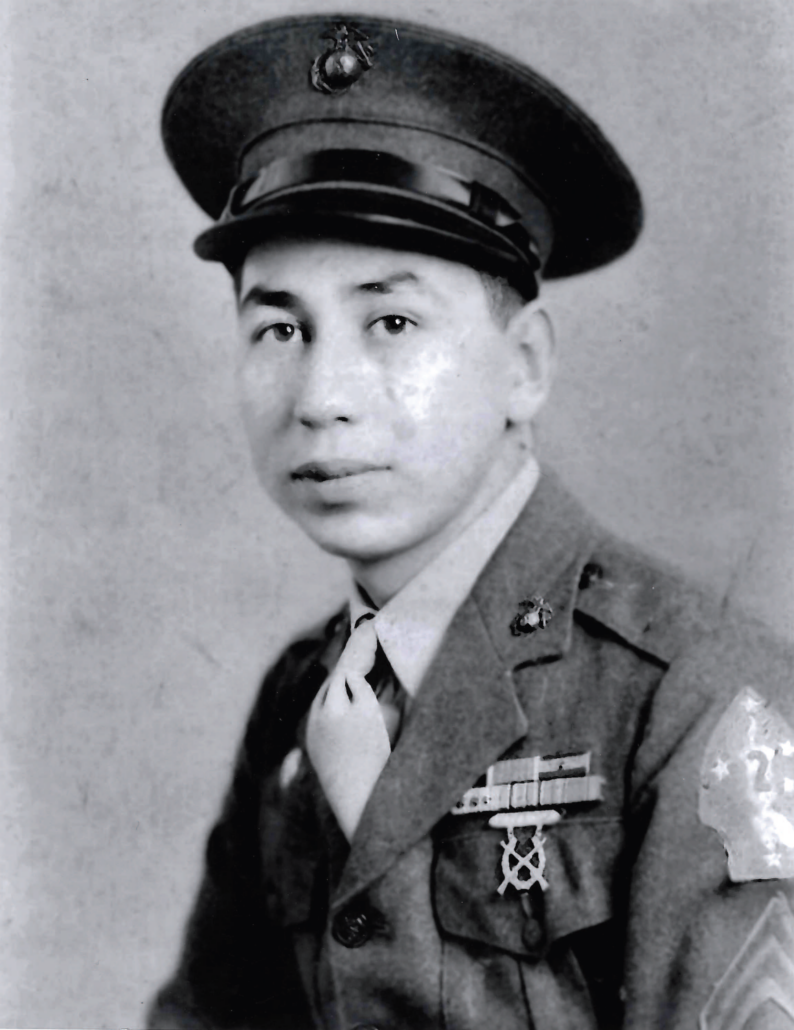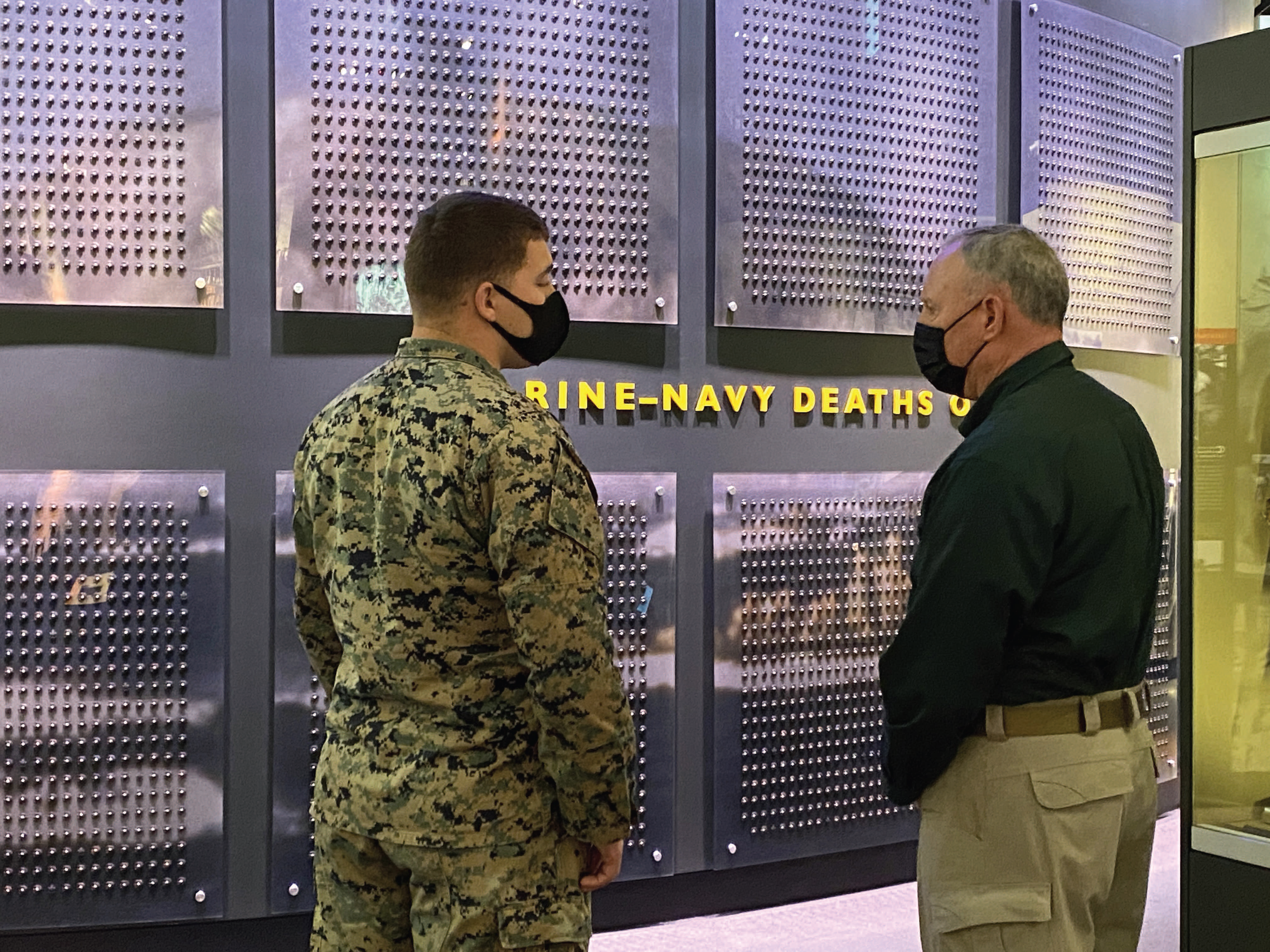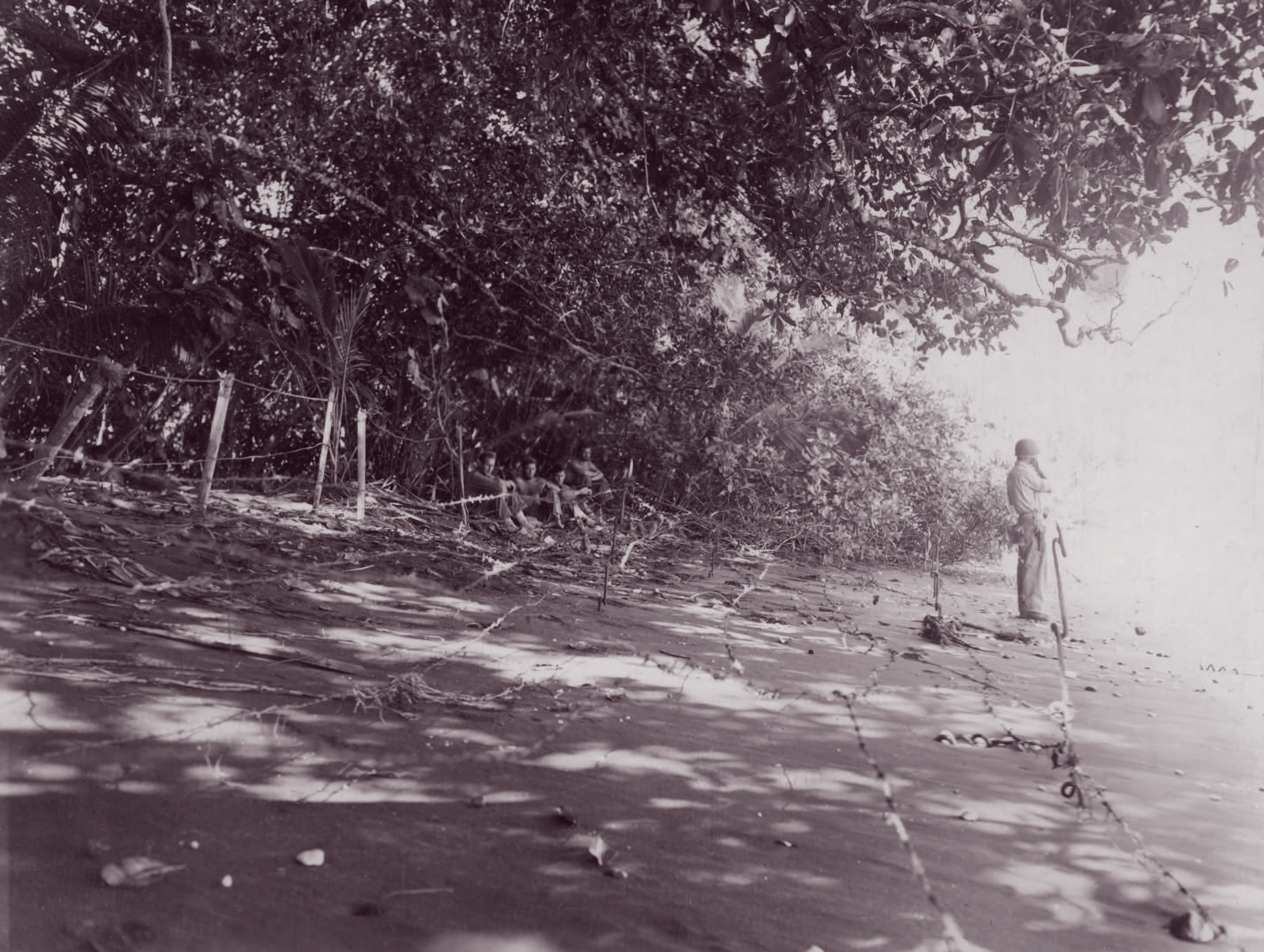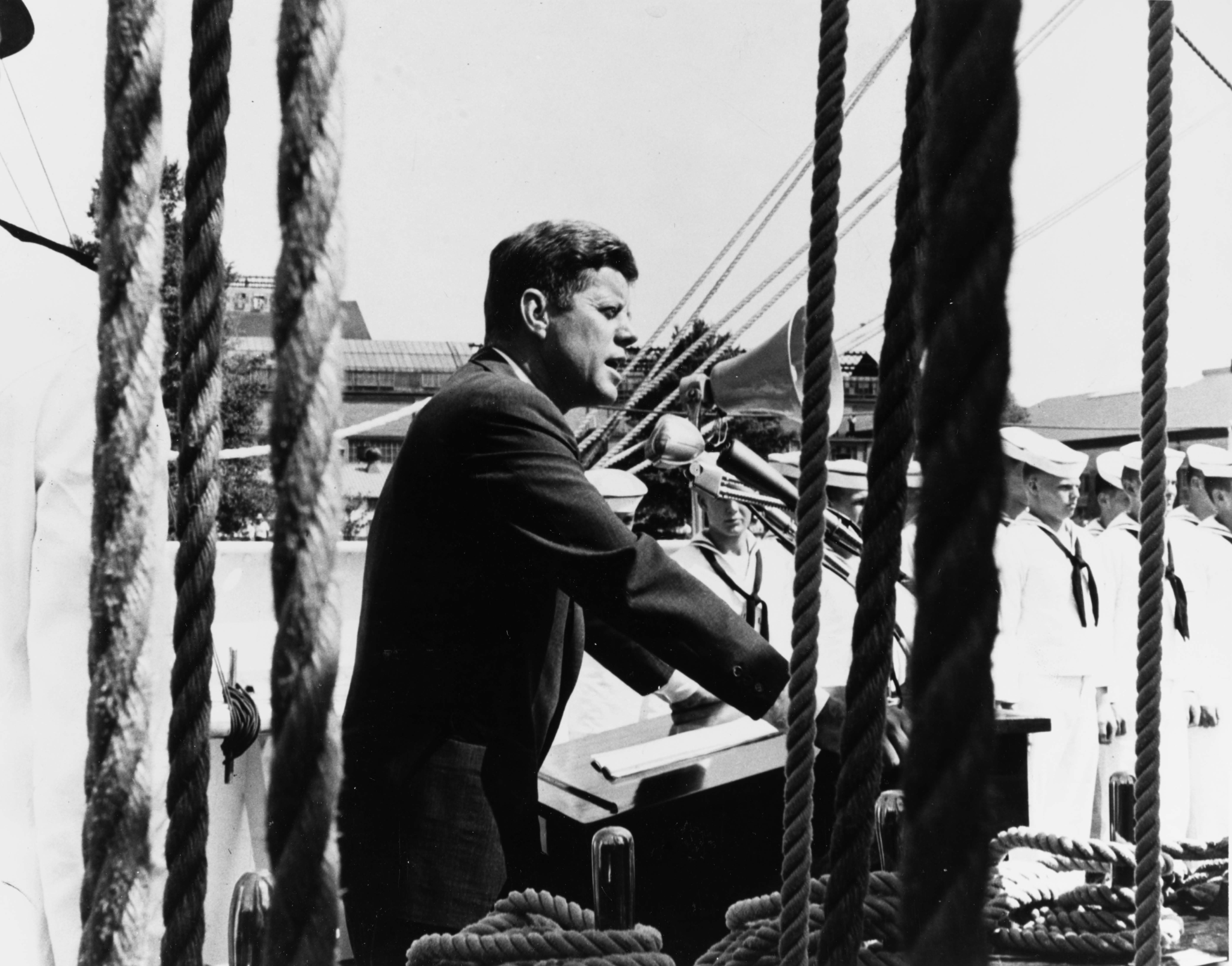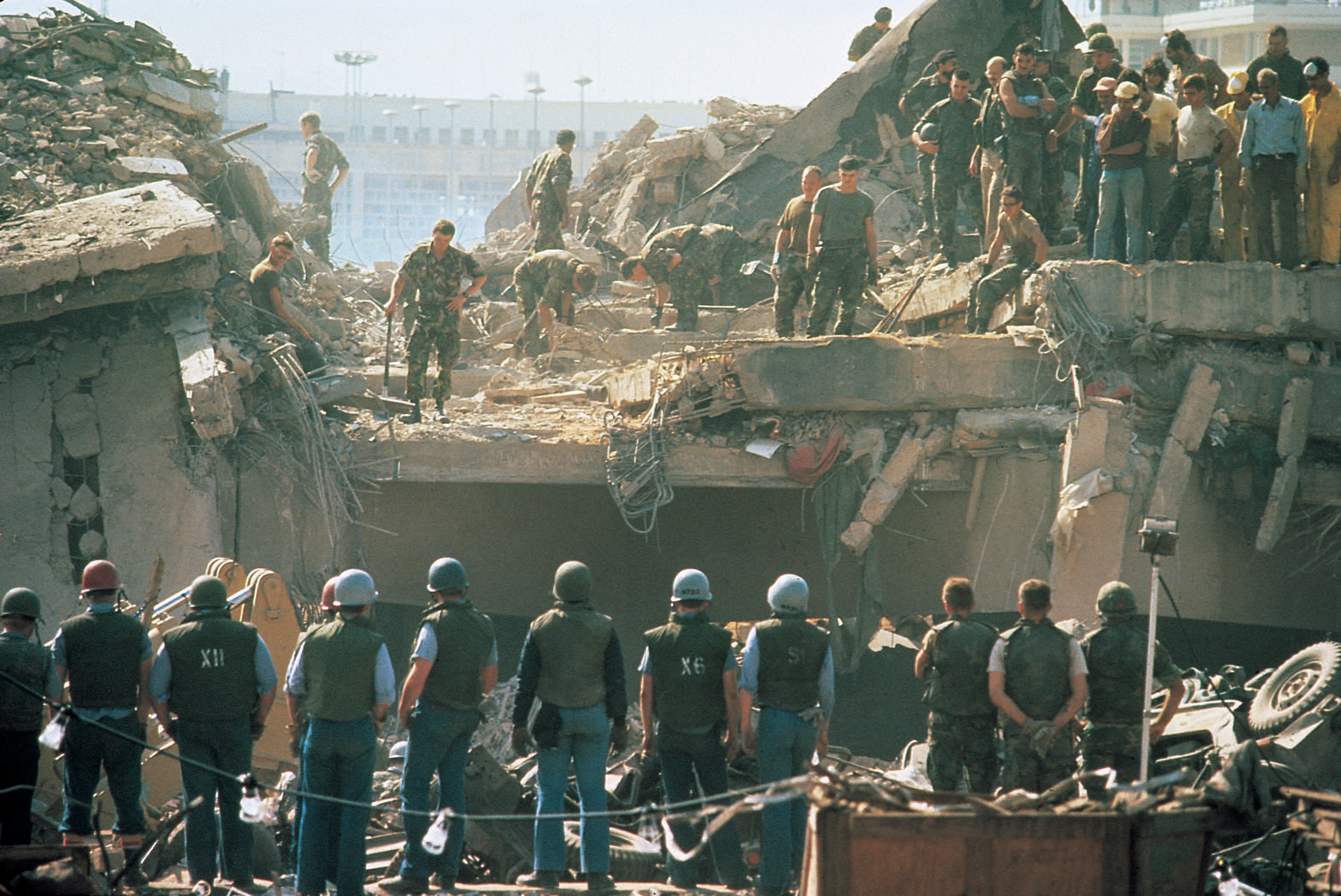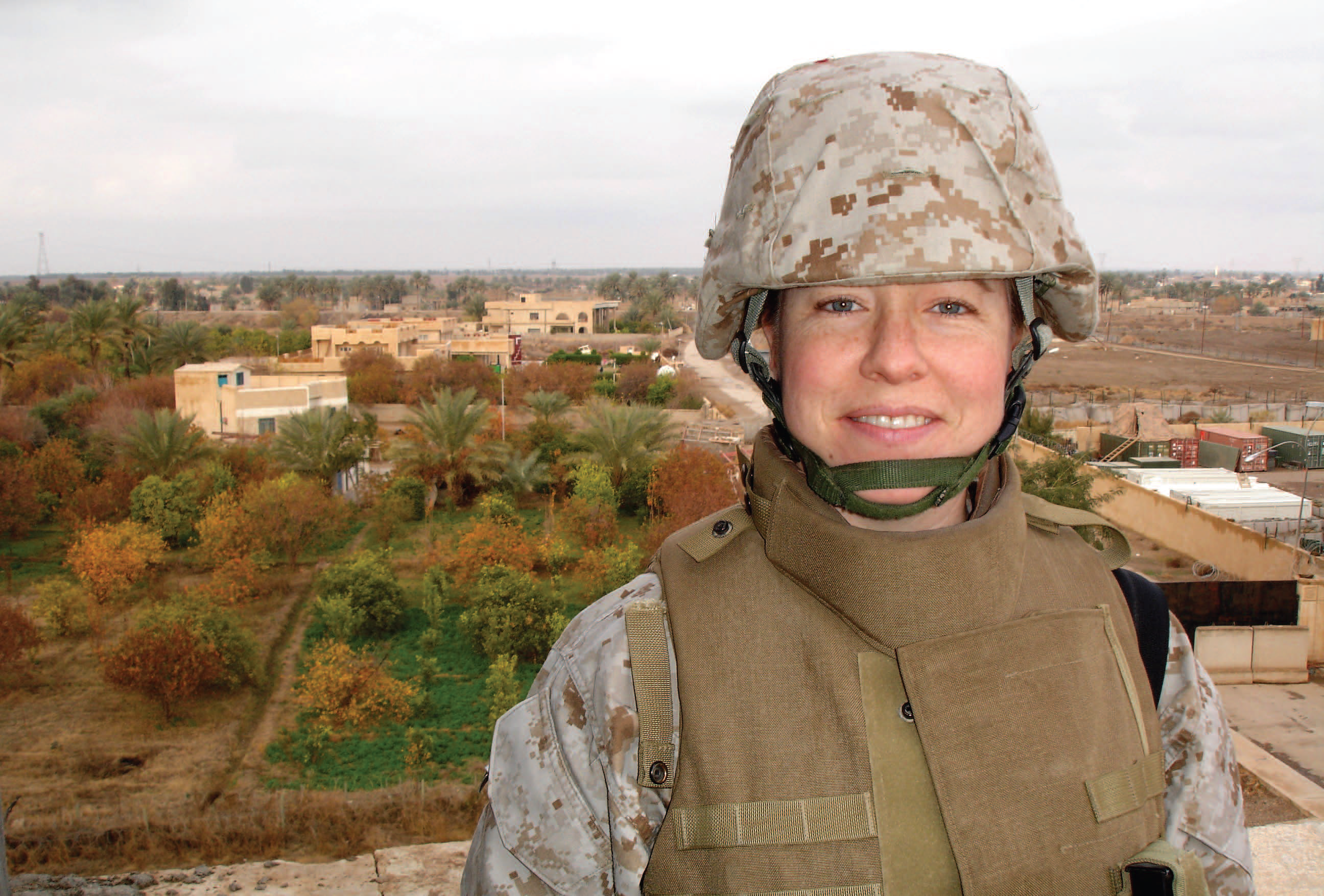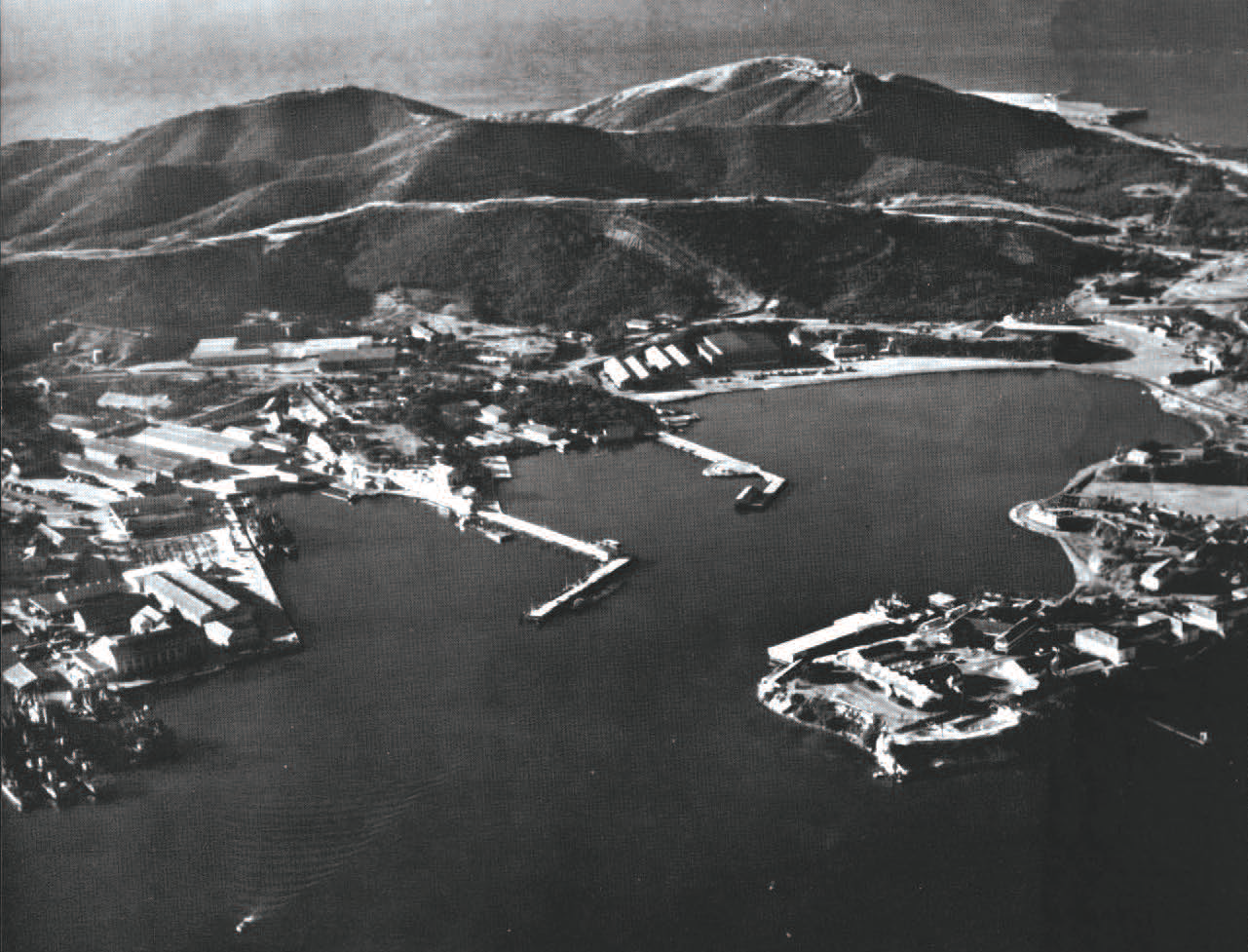It’s a few minutes after 4 a.m. when Marine Staff Sergeant Steven McCall rolls out of bed. His alarm isn’t set to go off for several minutes, but his body is accustomed to the early morning wakeups. He sets the alarm on his phone out of habit. McCall ambles to the bathroom, shaves, and brushes his teeth. He quietly gets dressed without turning the bedroom light on, so as not to wake his half-sleeping wife. It’s a kind gesture, but she’s used to the early mornings. They’ve been happening for 13 years.
McCall has been waking up before dawn since he first enlisted in the Marine Corps in 2010. He joined as an infantryman when he was 18. Since then, he’s deployed all over the world from Afghanistan to Somalia. But he’s spent the majority of his career working along the coast of North Carolina at Camp Lejeune and its satellite facilities.
Camp Lejeune—a sprawling 156,000-acre plot of coastal swamps and long-leaf pine forests—is home to the venerated 2nd Marine Division. McCall spent his first decade in the military assigned to the division’s 8th Marine Regiment. But Lejeune and its satellite facilities are also home to an elite unit: the Marine Raider Regiment. It’s there, among the revered amphibious warfighters, that McCall now spends his time.
It’s a cool 52 degrees this morning, but McCall knows the crisp air will soon give way to temperatures in the mid-70s. He throws a hoodie on for his drive to work and tosses his 60-pound pack in the backseat of his truck. In it, he’s got everything he’ll need for the day’s work. McCall packed the night before, like all of the Critical Skills Operators (CSOs) in his team did. Unlike during McCall’s time in the infantry, there was no packing list for the upcoming training cycle.
“They’re not children,” McCall said. “At this point in their careers, CSOs should know what they’re going to need. If there is something special for a particular training event, they’re told ahead of time. There’s no need to micromanage here.”
For those Marines who prove themselves worthy of serving in the Raider battalion, there’s a little more room for autonomy. There is no handholding in the world of special operations—and for good reason. Most of the missions given to Marine Raiders require small teams of CSOs to thrive on their own in remote corners of the globe with minimal guidance. Micromanagement during training only hinders the Marines’ ability to excel where others can’t.
“What you see in CSOs are the qualities you see in all Marines, but amplified tremendously,” Trial said. “The same aggressive, no-fail mindset instilled in all Marines on training day one of bootcamp shines brightest among CSOs. These guys never do anything half-assed.”
Trial adds that CSOs aren’t just particularly aggressive or gung-ho—they’re also cognitively gifted and intellectually capable of thinking outside the box to solve a problem. They can analyze rapidly evolving situations and consistently respond with workable solutions.
“If you give them a task—no matter how daunting or challenging—they will get it done. No matter what,” said Trial.
That no-fail Raider mentality is something Trial is intimately familiar with.
In 2019, Trial was operating in Afghanistan’s Nangarhar Province along the Pakistan border as part of a Joint Special Operations Command (JSOC) special missions unit. The small team was composed of members from every branch of the U.S. military, and whose job it was to hunt high-value targets of both the Islamic State and the Taliban. While navigating through the country’s rocky terrain, Trial triggered an improvised explosive device. The blast severed both of his legs. While Trial lay in the rocky Afghan soil, hemorrhaging deadly amounts of blood, he fought to remain conscious. With his life in limbo, Trial helped coordinate a response over the radio. His actions after the explosion exemplified the grit and no-quit attitude Marine Raiders have built their reputation around.
Trial may have epitomized the spiritus invictus of Marine Raiders as recently as a few years ago, but that tradition has passed through generations of Raiders. The elite Marines trace their lineage back to the very first official special operations unit in American history: the Marine Raiders of World War II.
When the Empire of Japan attacked the United States naval base at Pearl Harbor in December of 1941, it set the wheels of history into motion. The brazen attack became the catalyst that launched the United States into WW II and let the Marine Corps off its leash.
Following the attack, President Franklin D. Roosevelt directed the U.S. military to create a group of highly specialized troops similar to British Commandos. As a highly adaptable amphibious fighting force that already had a reputation for being consistently reliable, the Marine Corps was the obvious choice for where the experimental new commandos should come from. However, the Commandant of the Marine Corps, Thomas Holcomb, was not keen on designating a select few Marines as “elite.” To Holcomb, the entire branch was already considered as such. But when the Pacific Fleet commander, Admiral Chester Nimitz, seconded the President’s request, Holcomb capitulated. In February 1942, he ordered two battalions of specially trained Marines to be formed. Holcomb dubbed the new commandos “Raiders” two months before the Army established their own elite light infantrymen known as Rangers. While the two branches formed similar units almost simultaneously, the Raiders were the first to test their mettle against America’s enemies.
The 1st and 2nd Marine Raider battalions were among the first American troops to go on the offensive against the Japanese. Less than six months after forming, men of the 1st Raider Battalion—led by Lieutenant Colonel Merritt “Red Mike” Edson—landed on the island of Tulagi and fought a vicious 24-hour battle against the Japanese. The Raiders emerged victorious, suffering 45 Marines killed in action while killing more than 300 enemy troops. A few days later and more than 1,000 miles away, the 2nd Marine Raider Battalion—commanded by Major Evans Carlson—used small inflatable boats launched from submarines to conduct a nighttime raid against Makin atoll in the Gilbert Islands. In spite of poor weather and stiff Japanese resistance, the Raiders destroyed several Japanese boats and inflicted heavy casualties.
Notwithstanding their early successes, the island hopping campaign in the Pacific ultimately required more conventional Marines with little need for a commando-style special operations force. So, in February of 1944, the Raider battalions were disbanded, and the men dispersed to units across the Corps. The former Raiders went on to fight in every major battle in the Pacific, spanning the top of Iwo Jima’s Mount Suribachi to Okinawa’s Shuri castle.
Although the need for Raiders dissipated as the Pacific devolved into total war, the Marines’ venture into special operations was not in vain. The Raiders proved the value of highly trained warfighters capable of carrying out missions beyond the scope of conventional infantry. It also showed the United States that Marines make exceptional special operators—a fact that directly contributed to the creation of MARSOC six decades later.
By the time McCall pulls onto MARSOC’s private compound aboard Marine installation Stone Bay, the early morning darkness has given way to dawn. When he steps out of his truck, he hears the familiar hum of an unmanned aerial vehicle circling overhead. Marines who work with small, unmanned aircraft systems (sUAS) are there testing new systems most mornings. After all, it’s that kind of integration with cutting-edge technology that some Marines believe separates Raiders from the rest of SOCOM.
“CSOs carry out traditional special operations missions, but they have the capacity to conduct cyber operations in ways conventional units can’t. Cyber operations are emerging as one of the things we do better [than other SOF],” McCall said.
But today isn’t about cyber warfare or experimental unmanned aircraft. Today, McCall’s eight-man team is sharpening their close quarters battle (CQB) skills. Room-clearing is a perishable skill each of the CSOs first learned in the infantry but have since gone on to perfect as Raiders.
“Everyone loves CQB. It’s fun and it’s always relevant,” McCall said.
The members of McCall’s team have practiced the ins and outs of fighting in urban terrain at every level. They’ve practiced CQB as individuals and progressed to working as a team, complete with an array of attached enablers. CSOs even perfect the art of CQB when they’re only a small part of much larger operations. But for today, the training is about bringing it back to the basics.
In preparation, McCall’s Marines have already drawn their weapons, ammunition and equipment. Here at the MARSOC compound, even something as simple as taking weapons out of the armory is a bit different. McCall delegates specific jobs for each member of his team in order to prepare for the day’s training. One Marine draws ammunition, another checks out vehicles, and another oversees the preparation of explosives. For the Marine who draws the team’s weapons from the armory, McCall has very specific directions.
“Go get all of the guns out of the armory. When I say all the guns, I don’t mean all the guns you think we need. I mean all of our weapons out of the armory.”
McCall feels the need to specify what he means when he says, “all the guns,” because a slack-man—usually the junior CSO in his team—might overthink the broad directions. Slack-man is a Recon term leftover from MARSOC’s early days, when it was virtually indistinguishable from Force Reconnaissance.
When Special Operations Command (SOCOM) was established in the 1980s, every branch was invited to the table to contribute something to the new command. The Army, Navy, and Air Force all volunteered their most elite troops. The Marine Corps was the only holdout.
“The attitude was, ‘We’re already special. So no, we don’t need a seat at your ‘special operations’ table,’ ” said Trial, who used his experience as a Recon Marine to help establish MARSOC.
It was the same attitude Holcomb voiced when Roosevelt asked for Marine commandos in 1941—all Marines are elite and creating a specialized unit is redundant. But by remaining unaffiliated with SOCOM, the Corps’ most elite troops—Recon Marines—missed out on SOCOM missions and SOCOM funding for the next two decades.
This left the responsibility to remain a highly capable force up to Recon Marines themselves. With little financial support, Recon continued to produce some of the most disciplined, lethal and versatile warfighters in the entire U.S. military.
Rather than becoming a crippling blow to the Reconnaissance community, that lack of access to SOCOM funds and high-profile missions ended up fueling them to work harder. It put a chip on the shoulders of Recon Marines, driving them to continuously and consistently do more with less.
“We took it upon ourselves to maintain the same high standards that a Joint Special Operations Command (JSOC) shooter would,” said Trial. “We might be poor, but we’re going to do way more with way less.”
By refusing to allow a lack of funding and real-world missions to dilute the quality of Marine Recon, the Corps’ best troops were ready to step-up following the terrorist attacks of Sept. 11, 2001.
In the wake of 9/11, Secretary of Defense Donald Rumsfeld asked Lieutenant General Dell Dailey, then the commander of JSOC, to create a contingent of Marines to bolster JSOC’s capabilities. The result was the creation of an experimental unit known as Marine Detachment One.
The detachment—known as MARDET and more often as DET One—was created on June 19, 2003. The bulk of DET One consisted of hand-picked Force Recon Marines, most of whom were also school-trained scout snipers. The rest of the 86-man unit was composed of Navy corpsmen and Marines with intel, signal, fires, and communications backgrounds. In September 2004, after completing predeployment training alongside Naval Special Warfare Group One, DET One deployed to Iraq. It was there, among the dusty urban corridors that defined Operation Iraqi Freedom, that the experimental Marines made a name for themselves.
Relying on their deep bench of experienced scout snipers, DET One dominated the battlefield while conducting combat operations near Al Najaf, Iraq. Then, in November, DET One advanced north to fight in the notoriously deadly Operation Phantom Fury. It was there, in the dusty blood-soaked streets of Fallujah that DET One caught the attention of the entire special operations community.
“It was pretty apparent to everyone across the branches—special forces, Rangers, SEALs, PJs, and combat controllers—that there’s a new kid on the block and he’s not f—ing around,” said Trial.
Following their victories in Iraq, DET One returned to the United States and immediately set to preparing for the next deployment. However, like their WW II Raider forefathers, DET One was disbanded after less than two years. The Corps’ needed to make room for their permanent contribution to SOCOM: Marine Special Operations Command (MARSOC).
MARSOC’s creation got off to a bumpy start. For one, the unit was stood up before there was an established pipeline or even a selection process. Candidates consisted primarily of qualified Recon Marines, yet MARSOC still lacked the necessary assessment and selection hurdle that ensures other branches’ special operations units remain of the highest order. It was a factor that irked Trial from MARSOC’s inception.
“I liken the creation of MARSOC to the most badass Corvette in the world, only it doesn’t have a paint job,” Trial said. “You take the ’vette onto the dragstrip, get it going 200 miles an hour and while it’s going 200 you try and give it a paint job. That’s what MARSOC felt like in the early stages.”
In spite of no selection process and a training course getting put together on the fly, MARSOC was generally viewed favorably within the Marine Corps. It brought much of the same skillset to the table as Marine Recon, yet it wasn’t restricted by the Marine Expeditionary Unit (MEU). In the early days of Operation Enduring Freedom, Recon Marines felt underutilized because they were tethered to the MEU commander. In 2006, as a new special operations entity, MARSOC was given more room to flex its muscles.
Since their creation, Marine Raiders have deployed around the globe where they’ve pushed the fight against a variety of enemies. Raiders have hunted the Taliban in Afghanistan, defeated ISIS in Iraq, and killed terrorists across Africa. In their short tenure as a modern special operations force, Marine Raiders have earned more than a dozen medals for valor and show no signs of slowing down.
“MARSOC is still growing and evolving. It’s a new asset within SOCOM and within the American military,” said Trial.
Being new to SOCOM is something McCall keeps in the back of his head while he oversees the day’s training. Marine Raiders are aware of their status as the most junior members of SOCOM. Because of that, they’re eager to show the community what Marines are capable of. But the desire to prove themselves is still rooted in a mastery of the basics. With that in mind, McCall has every member of his team prepare their own explosives for the day’s training.
One member of his team previously attended the five-week Master Assaulter Course where Marines learn the art of blowing things up by hand. It’s that Marine’s responsibility to oversee the configuring of charges, but McCall tasks each Marine to do the work themselves.
“There’s a slightly greater risk tolerance here,” McCall said. “Safety remains paramount, but the nature of our job requires us to accept more risk than the units these Raiders came from before they were CSOs.”
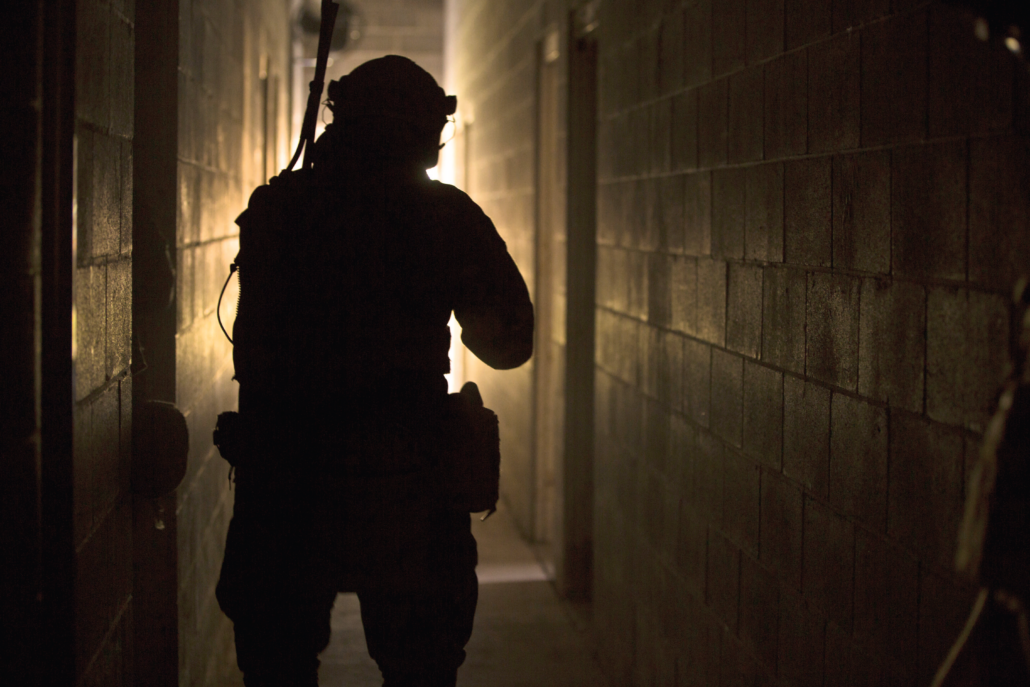
The Master Assaulter supervises as each Marine prepares 14-inch strip-charges meant to dismantle deadbolts and doorknobs. Other Marines build roller charges intended to blow doors completely off their hinges. When they finish configuring their explosives, the team begins rehearsals.
“We probably do five or six dry runs before we load up and go live,” McCall said. “That might sound like training wheels, but you lose valuable learning opportunities if you don’t take advantage of rehearsals.”
The MARSOC compound at Stone Bay has its own shoot house: a structure specifically designed for firing live ammunition without Marines having to worry about bullets ricocheting or punching through walls. The shoot house is also equipped with an overhead catwalk, where instructors and teammates can observe the teams as they work. Watching from overhead is akin to professional athletes critiquing game film. It allows Marines to see how things should and shouldn’t be done, drastically reducing the learning curve.
After the Raiders finish dry runs and test the charges they built on various doors and barriers, they load their weapons and prepare to go live. They progress slowly, building on each aspect of their training from individual actions to fighting as a team. They clear rooms, practice communicating through the deafening gunfire, and simulate taking casualties.
The only time they pause to unload is when they take a “casualty.” While McCall keeps the training as realistic as he can, the risk of a negligent discharge outweighs any benefit of forgoing a pause to unload weapons. Once the mock-casualty is cared for, the Raiders reload their weapons and finish clearing the shoot house.
They have the shoot house all to themselves, giving the Raiders every opportunity to perfect their CQB skills unimpeded by having to share training space with other units. It’s a relatively easy day for the CSOs, whose days are often filled with more complex training. Some days they practice helocasting out of UH-53s into the Atlantic Ocean or teaching a partner force that doesn’t speak English how to conduct counterterrorism operations. As Raiders, the elite Marines need to be prepared for any mission.
While McCall’s team is sharpening its CQB skills, other Raiders are operating in the shadows around the world. Like all Marines, Raiders remain ready to deploy anywhere, tackle any mission, and win any fight. They’re the Corps’ most highly trained Marines and now part of America’s special operations spear tip. But it’s not a specific kind of training that makes the Raiders such valuable assets to SOCOM. Ask any CSO what separates them from the rest of the pack, and you will get the same answer; it’s the warrior foundation they’re built upon.
“Raiders hold the highest standards of physical and mental fitness,” Trial said. “But their success comes from that Marine Corps ethos. That same intangible thing that all Marines experience at some point in their careers; the idea that they are underdogs who can—and will—do more with less. And on top of that, they’ll do it better.”
Editor’s note: For operational security, some names have been changed.
Author’s bio: Mac Caltrider enlisted in the Marine Corps in 2009 and served with 2nd Battalion, 8th Marines until 2014. Caltrider has since written for various online and print publications, including Coffee or Die Magazine, Free Range American, and OAF Nation. He was the 2023 recipient of the Marine Corps Heritage Foundation’s Master Sergeant Tom Bartlett Award. He is also the author of “Double Knot,” a forthcoming memoir about his service in Afghanistan. Caltrider currently teaches history in Baltimore, Md.


